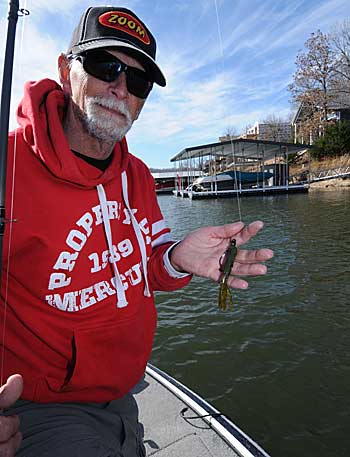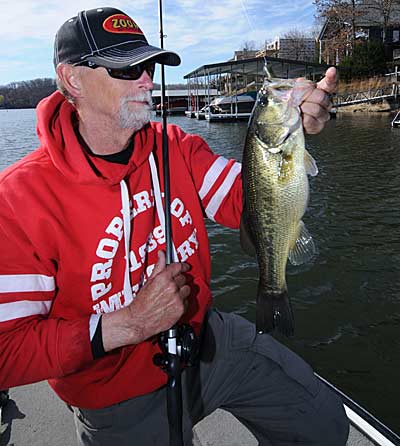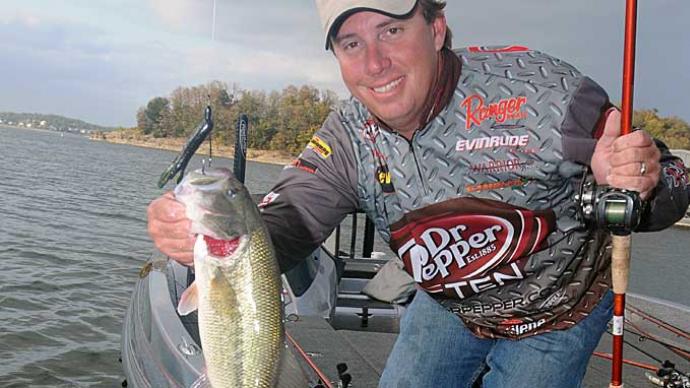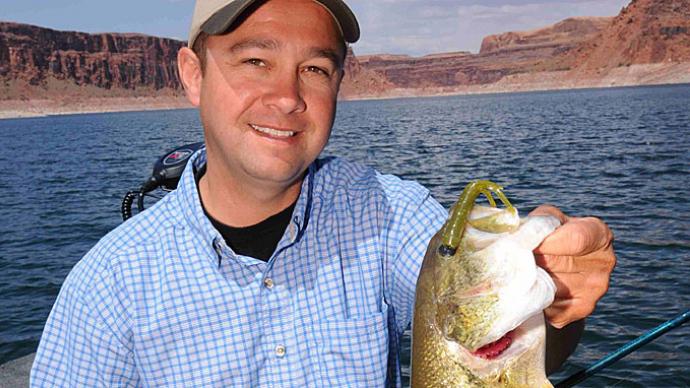
Many bass anglers prefer finesse jigs as a small profile lure for flipping and pitching, but Harold Stark favors a slimmer option for the same tactics.
Stark's finesse option for flipping and pitching is the flipping tube, a lure nearly forgotten by the bass fishing crowd. “The most effective thing about a flipping tube is probably its size,” Stark says. “It's a small profile. It's thin and easy for the bass to get a hold of, representing almost everything a bass eats, from a crawfish to a small shad."
The Missouri tournament competitor believes the flipping tube is also practical because it is unobtrusive. In contrast, other flipping baits tend to be big and bulky and can spook a bass when flipped into cover. Stark believes the flipping tube best imitates the crawfish bass anglers preferred when he used to sell live bait for five years. He noticed his customers preferred buying more undersized crawfish and mudbugs without pincers, or they would remove the pincers to make the bait easier for a bass to engulf.
The subtle movement of the flipping tube also makes it appealing to inactive bass. “The days it works best is when you don’t need the action, or the bass don't want action on the bait,” Stark says.
Stark still frequently pitches jigs and plastic worms, but there are times when he wants to offer bass the softer, slimmer flipping tube. “The tube has a more streamlined profile,” he says. “You look at everything that swims in the water, and whenever it does swim, it has a narrow, fine profile with nothing sticking out." In addition, the tube's soft body feels more natural to a bass when the lure is in its mouth, causing the fish to hang onto the bait longer.
The Missouri angler rates spring and fall as the best seasons to offer bass a flipping tube because the subtleness of the lure triggers more bites from both active and inactive fish affected by the multiple weather fronts of those two times of the year. Stark switches to a jig for tempting sluggish bass in the winter and opts for a lively plastic worm for active summertime bass.
The streamlined flipping tube makes it easier for Stark to put in the lure and pull it out of thick cover. "It shines in wood, laydowns, or buck bushes," Stark says. Then, when water is low in the fall, Stark flips the tube around any transition cover along the bank, such as rock piles or behind boat docks.

Stark prefers some color in the water (visibility of 6 inches to 2 feet) for flipping a tube because bass will move closer to the bank and tighter to shallow cover in the off-color water. He also favors the flipping tube on sunny days when bass are least active.
The Zoom 4.25-inch Salty Super Tube is Stark's choice for flipping and pitching. He favors the Zoom model because it has a thicker body than other tubes, which makes it heavier and easier to flip. Stark picks tubes in three basic colors: white for swimming the bait when bass are chasing shad, green pumpkin for clearer water, and black/red flake for darker water.
The longtime B.A.S.S. Nation angler rigs his flipping tube with an Eagle Claw TroKar Tube Hook in sizes 4/0, 5/0, or 6/0. Stark inserts the hook barely through the middle of the tube's nose. "The big mistake many guys make is they put the hook in too far," Stark says. "You just barely want the hook to go through (just past the barb) because you want the eye of your hook to extend out of the tube, which keeps the tube from bunching up (on the hook set)." He completes the rigging by passing the hook through the lower and upper parts of the body and then inserts the tip of the hook into the top of the tube body (similar to Texas-rigging a plastic worm).
Most of the time, Stark matches his flipping tube with a 5/16-ounce lead bullet sinker. However, if he is fishing in dirty water, he will switch to a tungsten sinker which makes more noise when it bumps into cover or hits bottom. Stark estimates he leaves his sinker unpegged 90 percent of the time and only pegs his weight if he is having trouble getting the tube into and out of the thick buck brush.
Two retrieves work best for Stark’s flipping tube presentations. "Most of the time, I am swimming it across the bottom,” he says. “I let it fall on a slack line, pick the rod up and let the bait pendulum back to me off the bottom. I often use another retrieve in the fall when there is a lot of shad in an area. Then I will swim it through the shad and give it a small shake."
Stark delivers his flipping tubes on a 7 1/2-foot medium-heavy action Lew’s Custom Speed Stick and a Lew’s Super Duty (7.2:1 gear ratio) baitcast reel filled with 15- or 20-pound test Seaguar Red Label fluorocarbon line. The high-speed reel allows Stark to pick up slack line quickly for the hook set when bass bite the tube and swim towards him.
The flipping tube triggers strikes from bass of all sizes for Stark. “It’s more of a numbers bait,” he says. “I have caught many fish in the 4- to 6-pound range on it, but it also attracts numbers. So when you are not getting bites, it is a lure you can put on and expect to get bites whether the big fish are biting or not."
BassResource may receive a portion of revenues if you make a purchase using a link above.




